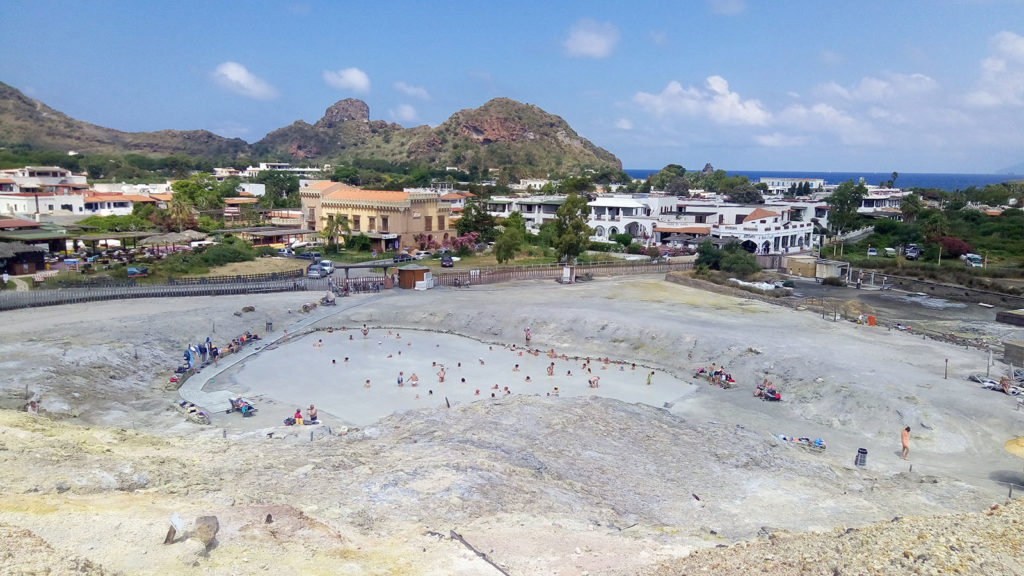Vulcano’s fumarole gases are not entirely of volcanic origin.
The magma deep below the surface and its gases have temperatures between 850 and 1050 °C.
At great depths the gases are dissolved inside the magma, but when it rises above certain altitudes, the decrease in pressure makes them separate. A bit like when you open a bottle of sparkling water: as soon as you unscrew the cap you start to see bubbles rising, bubbles of gas that were previously dissolved in the water.
So if the gases were just volcanic, you would not be able to get near them because they would burn you. In reality the fumarole gases are only a small part made up of the gases directly associated with the magma. 90% are from the normal rainwater or
aquifer
that enters the ground and begins to descend into the depths. The deeper it goes, the temperature of the surrounding soil increases, and when it exceeds 100 °C it turns the water into gas, causing it to rise again and leave the soil at a temperature of 120-140 °C.
 But be careful not to go near the
fumaroles
But be careful not to go near the
fumaroles
, they are dangerous!